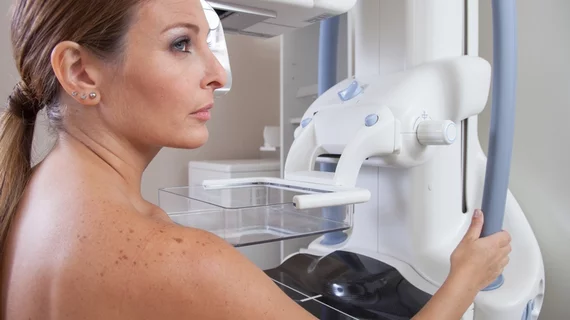Breast cancer survivors are not receiving the recommended number of mammograms following surgery, according to a new study published by the Journal of the National Comprehensive Cancer Network. The National Comprehensive Cancer Network (NCCN) recommends breast cancer survivors undergo annual mammograms to keep a close eye on potential disease recurrence.
The authors tracked the screening patterns of more than 27,000 patients after breast cancer surgery. Patients who had a bilateral mastectomy were not followed, as mammograms are not necessary. One year following surgery, 13 percent of breast cancer survivors had not undergone any follow-up breast imaging. Only 50 percent of patients tracked for at least five years followed NCCN recommendations.
“The use of regular mammograms to detect a return of breast cancer before any symptoms appear is associated with better overall survival,” lead author Kathryn Ruddy, MD, MPH, director of cancer survivorship for the department of oncology at Mayo Clinic Cancer Center in Rochester, Minnesota, said in a prepared statement. “Therefore, clinicians need to make sure that their patients are fully aware of the role these annual mammograms play in screening for new breast cancers as well as for local recurrences. Creating and implementing survivorship care plans with clear follow-up instructions may help ensure that more survivors adhere to recommended screening schedules.”
“This lack of imaging follow-up represents a missed opportunity for identifying recurrent or new breast cancers among a high-risk patient subgroup,” Benjamin O. Anderson, MD, professor of surgery and global health medicine at the University of Washington and Fred Hutchinson Cancer Research Center, both in Seattle, and vice-chair for the NCCN Guidelines Panel for Breast Cancer, said in the same statement.
The study’s authors noted that the number of breast cancer survivors who receive follow-up imaging in the first year is actually higher than rates found in women who had not previously been diagnosed with cancer. However, they added, those numbers drop considerably as time goes on.
“As women became long-term survivors, they were less likely to undergo mammography, even in the absence of any change in insurance status, and even in this relatively young cohort,” Ruddy and colleagues wrote. “This finding confirms and expands on previous studies showing a significant decline in mammography rates in the fourth or fifth year after treatment.”

